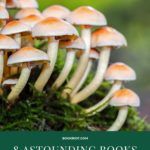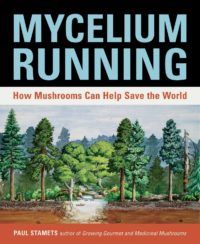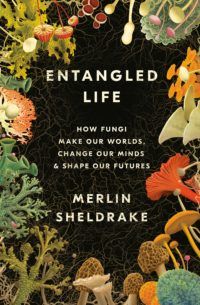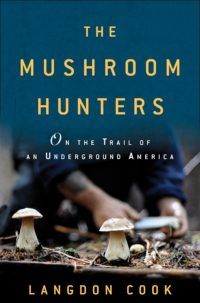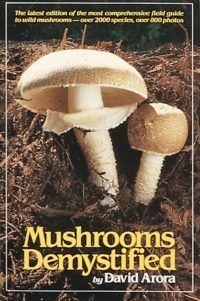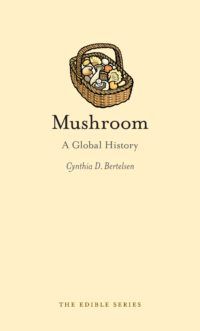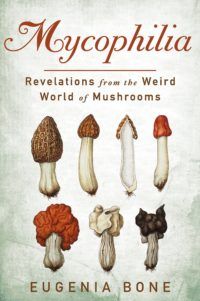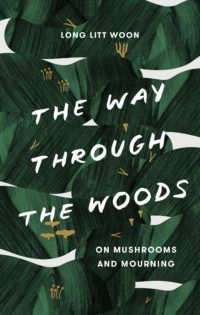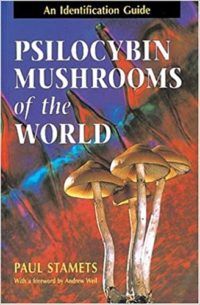Yet as amazing as mushrooms are, they are just the above-ground extensions of the fungi below. The fungal world is a wild and fascinating place, and has shaped our environment in ways that we are only beginning to understand. The eight books below explore the Fungi Kingdom, sketch out its relationship to the human world, and reveal its paramount significance to life on this zany planet.
Mycelium Running: How Mushrooms Can Help Save the World by Paul Stamets
Mycelium Running was my introduction to all things mushroom. It is an entertaining and profound meditation on the importance of fungi to human society. In this book, Stamets delves into the evolutionary history of fungi and shows its incredible diversity on Earth. Additionally, he advocates for “mycorestoration,” which involves the intentional growing of mushrooms to save and restore the environment. Fungi, as Stamets notes, have the ability to digest toxins and waste, thus cleaning the ecosystems they inhabit. Pick this book up; it is a fascinating read.
Entangled Life: How Fungi Make Our Worlds, Shape Our Minds & Shape Our Futures, by Merlin Sheldrake
Like Stamets, Merlin Sheldrake explores the wide-ranging influence of fungi in his book Entangled Life. From the foothills of Bologna to the rain forests of Panama, from under the soil to inside the tripping mind, Sheldrake takes his reader on an adventure through the fungal world. For me, the most exciting part of the book is his discussion of the interrelationship between plants and the fungi. Basically, plants piggybacked on fungi, using them as a root system to evolve from sea to land. Thus, without fungi, plants as we know them would not exist. Check out Entangled Life when you get the chance.
The Mushroom Hunters: On the Trail of an Underground America by Langdon Cook
In The Mushroom Hunters, food writer Langdon Cook draws his reader into the world of mushroom foraging. Cook’s travelogue charts out prime mushroom locations and tells the stories of the foragers he meets along the way. In the process, he shows how mushroom foraging is a multi-million dollar business. Getting a stake in that biz is like hitting it big in the gold rush. The Mushroom Hunters details the fascinating journey of these picked mushrooms, from the dark and secretive depths of the forest to opulent American restaurant tables. It is a thoroughly engaging read.
Mushrooms Demystified by David Arora
Although it is over 1000 pages and would definitely weigh down a backpack, David Arora’s Mushrooms Demystified is still the definitive guide to finding and foraging for mushrooms. These pages are packed with handy picking tips, witty anecdotes, and extremely thorough classification guides. Additionally, Arora’s encyclopedia covers over 2,000 species of mushrooms and contains hundreds of pictures to help you identify your favorite fungi in the field. This book is a must have for foragers and mushroom enthusiasts.
Mushroom: A Global History by Cynthia D. Bertelsen
Cynthia D. Bertelsen’s history of mushrooms is part of The University of Chicago Press’s excellent and entertaining Edible Book series. Her brief account of the fruiting fungi reveals how mushrooms have been intertwined with religious practices, developments in agriculture and medicine, and conflicts between rival states. Especially of note, Bertelsen dives into the history of mushrooms as food, and the massive industry that grew around the global demand for it. A short and quick volume on the fungal world, Mushroom is worth reading.
Mycophilia: Revelations from the Weird World of Mushrooms by Eugenia Bone
Eugenia Bone’s Mycophilia is a love letter to the fungal world and the mushroom foraging community. Having served as president of the New York Mycological Society, Bone knows this community intimately. Therefore, her book details the gamut of foragers: from amateur enthusiasts out on the trails to the hardcore finders who are part of the commercial industry. Along the way, she provides a social history of mushroom use in cooking and medicine. However, the best parts of Mycophilia are seeing Bone in action. She documents her travels with foragers, conversations with restaurateurs and those in the industry, and, most importantly, her unabashed love of mushrooms.
The Way Through the Woods: On Mushrooms and Mourning by Long Litt Woon
“Grief grinds slowly; it devours all the time it needs.” Thus begins Long Litt Woon’s memoir of mourning and mushroom foraging. After 32 years of marriage, Long’s husband suddenly passed away. Lost in a world of grief, she enrolled in a foraging course—a decision that changed the direction of her life. The Way Through the Woods captures Long’s journey with loss, as well as how mushrooming helped her reconnect with the world. At the heart of her memoir is the conviction that engaging with mushrooms and the natural world can be a radically transformative experience. Long’s book is a moving read with a different perspective on the fungal world.
Psilocybin Mushrooms of the World: An Identification Guide by Paul Stamets
Okay, so I couldn’t write this list and not include one on psilocybin mushrooms! The author of Mycelium Running, Paul Stamets provides an authoritative guide to psychoactive fungi, complete with visual and biological information on over 100 species. Throughout the guide, he carefully explains how to forage responsibly for these special mushrooms and poisonous look-a-likes to avoid. Additionally, he discusses how ancient cultures around the world used these mushrooms, as well as modern-day practices. If you’re looking for a great trip, Psilocybin Mushrooms of the World is your book!
An Important Note
When researching for this post, it became quite clear that there is a lack of books about fungi for a popular audience written by authors of color. However, people of color are heavily involved in the field of mycology. For example, check out both the African Mycological Association and the Asian Mycological Association for work, research, and publications on mycology across those two continents. Additionally, you can read about William Padilla-Brown’s work on mushroom cultivation, especially for communities of color, here. The website for Padilla-Brown’s company, MycoSymbiotics, contains highly technical and awesome manuals on growing mushrooms. Finally, the groundbreaking POC Fungi Community can be found on Facebook. Mixing social justice and political activism with mycology, the POC Fungi Community is an important resource for rethinking what mushrooming can accomplish in the world. Happy reading!
